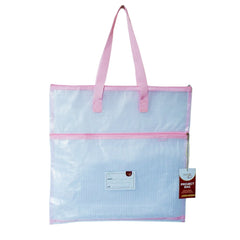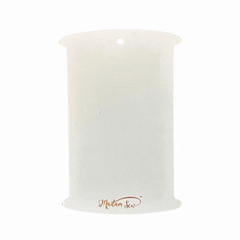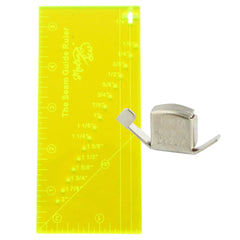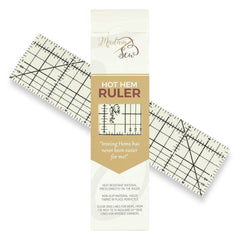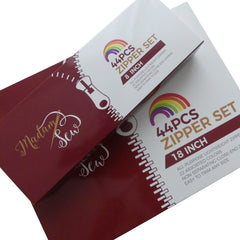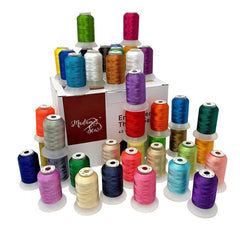Sashiko for Beginners: A Little Guide to This Beautiful Japanese Hand Stitching Technique
In this post, we’ll dive into what Sashiko is, what you need, how you can use it, what the basic stitches are, how it is different from hand embroidery, and how to incorporate it into your sewing or quilting practice.
Personally, I don’t have any experience in Japanese stitching, other than I’m really fascinated with this craft. I’ve been reading a lot about it and watched a ton of videos, so let me share with you what I believe is important to get started and to convince you to try it out.
What is Sashiko?
Sashiko (刺し子) is a traditional Japanese hand-stitching technique that literally means "little stabs." It was originally used as a form of functional mending and reinforcement of clothes, using white thread on indigo dyed fabric. Over the centuries Sashiko has evolved into a beautiful decorative art with a meditative rhythm. Sashiko has such a rich tradition and it’s also incredibly accessible for beginners. Whether you're repairing jeans, embellishing fabric, or adding texture to quilting, Sashiko offers an easy entry point into slow stitching.
This jacket is part of the Metropolitan Museum of Art collection. It is a jacket from the second part of the 19th century. The stitch patterns are all variations of interlocking circles.
Why Use Sashiko?
Using Sashiko is very accessible. You can use it for mending and repairing clothes or to decorate different textiles and items made out of fabric. It is a craft that holds high durability and sustainability. The result is beautiful even if you are not an experienced hand stitcher and it is a mindful activity.
-
Accessible - Sashiko has a low barrier to entry. You don’t need expensive or complex tools to start with this craft. All you need is a needle, thread and fabric.
- Durability and Sustainability – You can extend the life of garments, adding strength by layering and reinforcing worn-out fabric (like knees of jeans or bag handles). It is used for visible mending and in this way aligns with slow fashion and upcycling.
- Beauty – Embellish plain fabric of clothing, accessories or home items with Sashiko’s minimal geometric and nature inspired patterns.
- Mindfulness – The repetitive quiet stitching is both meditative, calming and relaxing. It encourages slowing down, focusing and crafting with intent.
What You Need to Get Started with Sashiko
You don’t need much to begin. That’s one reason it’s such a beginner-friendly craft. For the adepts of the traditional Japanese craft I want to let you know that I’m trying to make it as accessible as possible. Sashiko is all about upcycling and being thrifty. This means that if I can use tools and threads from other crafts, I will, just to give people a taste of this beautiful craft.
Basic Tools:
1. Sashiko Thread
-
- Sashiko thread is 100% cotton thread that consists of several plies but is traditionally used without dividing it up. Sashiko thread is thicker than embroidery floss, but more matte than the glossy and slippery embroidery thread. If you want, you can substitute with size 8 perle cotton. I like these Sashiko threads from Amazon or these. If you just want to try if Sashiko is something for you and you have embroidery thread, just use that.
-
- Sashiko thread comes in white and red traditionally, but now is available in many colors.
2. Sashiko Needle
-
- The needles are longer than embroidery needles, with a large eye and sharp tip, because you load multiple stitches at once on your needle. Shashika is done quickly. With the long needles you can pick up bits of fabric multiple times so you complete more than one stitch at a time. You’ll load them up like beads on the needle. I would recommend these sashiko needles from Amazon, but any sharp long needle can work to get the hang of it.
3. Fabric
-
-
Traditionally indigo-dyed cotton (like Kofu) is used, but any tight-weave cotton or linen will work. Start with dark fabric for high contrast. You can use scraps of denim or canvas to practice. There is also Sashiko cloth on the market with preprinted gridlines with various patterns.
-
4. Thimble
-
-
In traditional Sashiko they use a palm thimble instead of a finger thimble to push the long needle through fabric. The thimble sits where your middle finger meets your palm. You push the needle through the fabric with your palm.
-
You can make a palm thimble yourself with this tutorial.
-
5. Marker & Ruler
-
-
Use a chalk pencil or another type of temporary fabric marker like a water soluble marker or a white heat erasable fabric marking pen to mark your sashiko patterns before stitching them. For straight geometrical lines, a ruler will come in handy as well.
-
I used the MadamSew white heat erasable fabric marker to draw some helplines on my denim fabric. The lines can be erased easily with a hot iron. The other image is from a more advanced person but they also used an erasable pen to draw some helplines.
Maybe you are wondering…I don’t need a hoop for Sashiko stitching? In Sashiko they don’t use hoops because they move the fabric when making the stitches, but if you are more comfortable using one, don’t be shy! You won’t need the hand thimble if you use a hoop.
Basic Stitches and Patterns
Although the basic stitch in Shashiko is the running stitch, it is made differently than you would in embroidery. The stitches are called stabs and are typically between 2 mm (1/16 inch) and 7 mm (¼ inch) long, the back being about 1/3 of the top stitches. It is important to keep the stitch length consistent. The exact length can be adjusted depending on the pattern and the desired look.
Sashiko adepts hold the needle differently, and move the fabric more than they move the needle during the stitching process. The needle rests against the palm thimble. You lead the needle between your thumb and index or middle finger, rather than hold it, like you would in embroidery. With your palm you can put more force on the needle to push it through the fabric. As the thread is less slippery, you need more power than you would in embroidery.
The Running Stitch
-
All Sashiko designs are made using just one simple stitch: the running stitch. It is the foundation of Sashiko.
-
The magic comes in how you space the stitches and form patterns.
No Knots
Regular hand-sewing requires a knot at the end of the thread to hold. However, in sashiko they often avoid making knots when they start stitching and end stitching. Instead, they make several “over-ray” stitches (or back stitches) to hold the thread and fabric. You start a couple of stitches away from your starting point, turn back and stitch the same stitches again. When you stop you do the same thing, make a u-turn and sew the last stitches again.
Basic Sashiko Patterns
Geometric patterns are what you see most in sashiko, especially for beginners, but one can also find patterns featuring animals and other aspects of the natural world. Most of the designs are based on a grid. You can mark them with a marker and ruler.
Here are a 3 classic beginner motifs for you to try:
1. Horizontal and Vertical Stripes
These may look boring to you but it is a good way to start before trying more complicated patterns. You need to practice those straight lines and evenly spaced stabs before you move on to something else. When you mark you can either mark full lines or mark the stabs.
2. Cross Stitch (Jujizashi)
Jujizashi Sashiko cross stitch is a very common sashiko stitch that is made out of horizontal and vertical running stitches. It is easiest when you mark a grid on the fabric with a marker, but the stitch can be done “free hand” as well. The character of this stitch comes from not having perfect stitches. It is intended as a mending stitch to extend the wear of clothes but has evolved as a decorative stitch for garments and accessories.
3. Checks (Koshi)
The stitches of Koshi Sashiko form a gridlike pattern. So to prepare for this pattern, measure out a ½ inch (1cm) grid over the area you wish to stitch and mark with a fine erasable fabric marker. Using this grid as a guide, stitch ½ inch (1cm) stitches along the vertical lines of the grid, leaving a small space where the grid lines meet. Continuing to use the grid as a guide, stitch ½ inch (1cm) stitches along the horizontal lines, leaving a small space where the grid lines meet.
Other Popular Sashiko Designs:
-
Persimmon Flower Stitch (Kakinohanazashi)
- Great for practicing symmetry and repetition.
-
Hemp Leaf Pattern (Asanoha)
- A beautiful geometric design symbolizing growth and strength.
-
Blue Ocean Waves (Seigaiha)
- Flowing, curved lines—good for learning rhythm and movement.
Tips to Begin Your First Sashiko Project
-
Start small: Practice on a scrap and then start with a coaster, a bookmark, or a patch (that you can use to mend your clothes).
- Use an erasable fabric marker and ruler or use a pre-printed Sashiko sampler cloth as a guide to position your stitches accurately.
- Focus on even spacing, not perfection. Slight irregularities add to the handmade charm.
- Don’t pull your stitches too tight—let the fabric relax so it lies flat. Smooth your fabric after each row of stitches. Otherwise your fabric will get stuck. Always keep a little loop of thread between each row of stitches and each sharp turn.
- Plan your “stitch route” before you start sewing. Figure out the shortest route for your threads to not waste thread.
Combining Sashiko with Sewing and Quilting
Sashiko also pairs easily and beautifully with other fabric crafts like:
-
Visible Mending – Patch tears with layered fabrics and stitch over the area.
-
Quilt Embellishment – Use Sashiko stitching to add texture to quilt tops or as a form of hand quilting or make Sashiko panels to include as blocks in a quilt.
- Garment Decoration – Embellish jackets, jeans, or tote bags with stitched motifs.
The quilt in the image above is from Wendy’s Quilts and More, the embellished jacket from Fanning Sparks.
Sashiko is for Everyone
Whether you're brand new to stitching or a seasoned quilter, Sashiko is a gateway to slow, intentional creativity. This Japanese stitching is both an art and a utility—just one stitch opens a world of patterns, meaning, and quiet beauty.
If you want to dive a little deeper, I think Xiao Xiao Yarn’s YouTube Channel is great to get started and learn along the way.
Give it a try—you might find it’s just the calm you were looking for.
An
Blogging for Madam Sew










